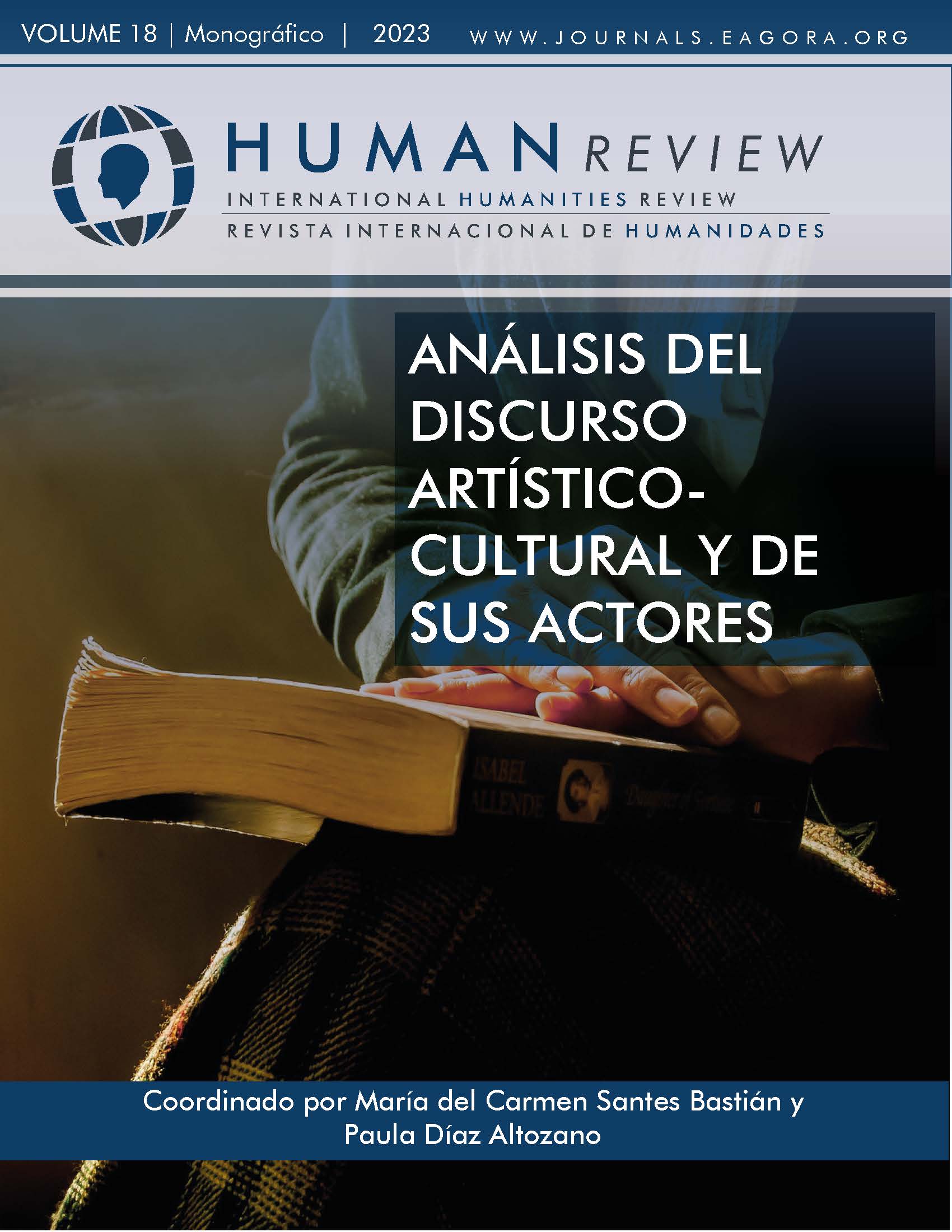Eroticism, the poetics of emptiness and avant-garde sublimity in Altazor by Vicente Huidobro
DOI:
https://doi.org/10.37467/revhuman.v18.4893Keywords:
Literature and eroticism, Artistic avant-gardes, Aesthetics of emptiness, Creationism, Spanish-American literatureAbstract
Altazor o el viaje en paracaídas by Vicente Huidobro is undoubtedly one of the masterpieces of Spanish-American literature and, by extension, of Hispanic-American literature. Inquiring into its literary construction from the avant-garde codes of eroticism as a trigger, and the aesthetics of sublimity as a framework of creation, is the best way to understand the poetics of emptiness and the systematisation of literary resources that articulate the sublime. Thus, creationism singularly and the avant-gardes in general, find their entropic demiurge in the dissolution of limits that energises sublimity.
References
Andreas-Salomé, Lou (1993). El erotismo. José J. Olañeta.
Ansa, E. (2019). Estéticas del vacío en Huidobro y Oteiza. Chasqui, nº 48(1), págs. 71-90.
Bataille, Georges (2007). El Erotismo. Tusquets Editores.
Breton, André (2205). Exposition internationale du surréalisme EROS. Mahón, A. (2005). Surrealism and the Politics of Eros. Thames & Hudson.
Carmona, M. T. S. (2013). El espíritu de las vanguardias: Vislumbres y perspectivas de un arte estrábico. Arte, Individuo y Sociedad, 25(1), 135-151. DOI: https://doi.org/10.5209/rev_ARIS.2013.v25.n1.41169
Echevarría, N. B. (2022). Textos e intertextos: los ismos en El segundo libro de las mujeres de Enrique Gómez Carrillo. Ceiba, págs. 72-81.
Favi Cortés, G. (2014). El creacionismo y la manifestación de lo sublime en algunos textos poéticos de vicente huidobro. Revista Cifra Nueva, nº 29, págs. 45-54.
Gaete Cáceres, M. Á. (2014). Ad infinitum: implicaciones de lo sublime en la contemporaneidad. Aisthesis, nº 56, págs. 53-68. DOI: https://doi.org/10.4067/S0718-71812014000200004
Garrandés, A. (2015, June). Llama, lenguaje, ceniza: estaciones críticas del cuerpo, la literatura, el erotismo y la visualidad. Congreso Nacional y Internacional de Lingüística, Literatura y Semiótica. 2015.
León, B. B. (2015). El erotismo en la estética Surrealista. In Quinto Simposio Virtual Valor y Sugestión del Patrimonio. Universidad de Málaga.
Llorente, M. E. (2011). El traje vacío. Origen, pervivencia y evolución de un motivo en la poesía española de vanguardia: ultraísmo, creacionismo y surrealismo. Revista de literatura, nº 73(146), págs. 513-538. DOI: https://doi.org/10.3989/revliteratura.2011.v73.i146.272
Orsanic, Lucía. “Una poética de la caída en Altazor (1931) de Vicente Huidobro” [en línea]. En Avenatti de Palumbo, Cecilia I. (coord.). Miradas desde el bicentenario: imaginarios, figuras y poéticas. Educa, 2011. Disponible en: http://bibliotecadigital.uca.edu.ar/repositorio/investigacion/una-poetica-caida-altazor.pdf [Fecha de consulta: 4/07/2022]
Ortega, N. A. (2000). Vicente Huidobro Altazor y las vanguardias. UNAM.
Péret, Benjamin (2011). El núcleo del cometa. Editorial Argonauta.
Steyerl, Hito (2006). “El lenguaje de las cosas” [en línea]. En Transversal: differences & representations, Eipcp, junio de 2006. Disponible en: https://transversal.at/transversal/0606/steyerl/es [Fecha de consulta: 10/07/2022]
Veloso, C. L. (2017). La retórica de la pureza, la transparencia, el vacío y la nada (Doctoral dissertation, Universidade de Vigo).
Downloads
Published
How to Cite
Issue
Section
License
Those authors who publish in this journal accept the following terms:
- Authors will keep the moral right of the work and they will transfer the commercial rights.
- After 1 year from publication, the work shall thereafter be open access online on our website, but will retain copyright.
- In the event that the authors wish to assign an Creative Commons (CC) license, they may request it by writing to publishing@eagora.org









